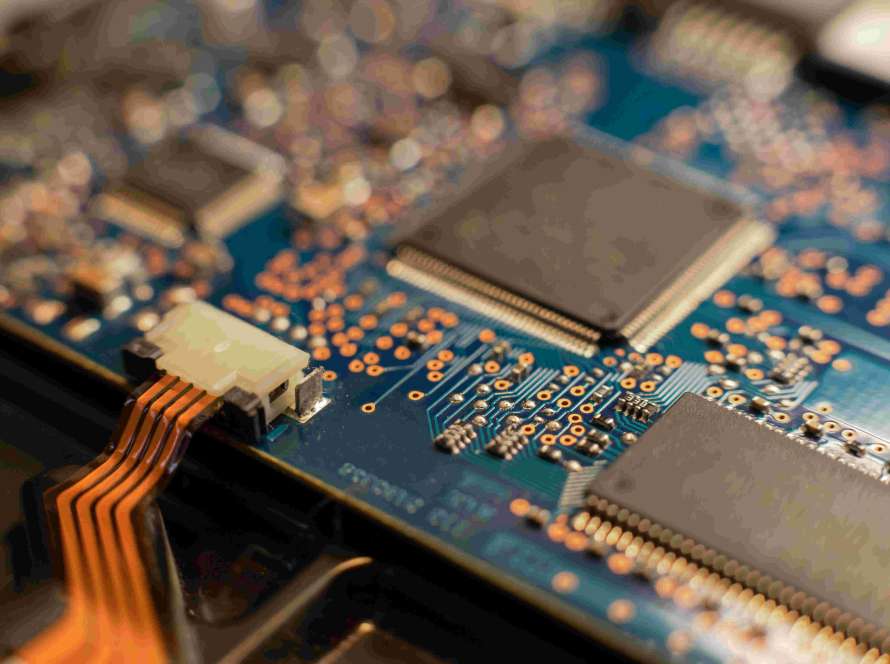
AMS & DMS in VLSI Verification
Analog Mixed Signal (AMS) and Digital Mixed Signal (DMS) are both crucial areas in the verification and validation of integrated circuits, but they differ significantly in their nature and the expertise required for each.
Analog Mixed Signal (AMS)
AMS refers to the combination of analog and digital components within an integrated circuit, where both types of signals coexist and interact. Analog signals are continuous and can represent an infinite range of values, such as varying voltages or currents. AMS verification involves tasks like:
Focus: AMS verification targets the SoC or subsystem level, prioritizing the analog aspects of the design. Ensuring the proper interaction between analog and digital components.
Method: It employs detailed analog solvers and models or schematics for the analog components. Digital components are represented using behavioral models written in languages like Verilog, VHDL, or System Verilog. Conducting simulations that account for non-linear behaviors, noise, and variations in analog parameters. Understanding the subtleties of circuit behavior under different physical conditions.
Advantages: AMS verification provides highly accurate results, making it ideal for validating complex analog-digital interactions.
Challenges: This approach can lead to slower simulation times and occasional convergence issues due to the complexity of the models.
Skills Required: A strong understanding of analog circuit design, digital design principles, and system-level integration is essential. Proficiency in creating and verifying analog behavioral models using Verilog-AMS is also a critical skill. A strong background in electrical engineering, circuit theory, and the ability to use tools like SPICE for analog simulation. Engineers need to have a solid grasp of signal integrity, power supply noise analysis, and transistor-level circuit design.
Digital Mixed Signal (DMS)
DMS focuses on circuits where the digital domain plays a significant role, and the analog content is primarily used for supporting digital operations (e.g., clocks, data converters). Digital signals are discrete and represent binary states (0s and 1s).
Focus: DMS verification emphasizes the digital aspects of mixed-signal ICs, performed at the SoC or subsystem level. Verifying that digital logic interacts correctly with minor analog components.
Method: Analog components are simplified into behavioral models using techniques like real, System Verilog Real Number Modeling (RNM), or User-Defined Nets (UDNs). This eliminates the need for analog solvers, making the process faster. Digital components are modeled using Verilog, VHDL, or System Verilog to represent their behavior. Using digital verification techniques like static timing analysis and formal verification, along with mixed-signal simulation. Managing mixed-signal interfaces like ADCs (Analog-to-Digital Converters) and DACs (Digital-to-Analog Converters).
Advantages: Simulations are significantly faster than AMS verification, enabling quicker iteration cycles. DMS provides robust model verification, ensuring comprehensive functional coverage of the design.
Challenges: The accuracy of verification heavily depends on the quality and precision of the analog behavioral models. Poorly constructed models can lead to incorrect results.
Skills Required: Proficiency in digital design and verification languages (e.g., System Verilog, VHDL) and experience with digital verification tools. Knowledge of mixed-signal simulation tools and methodologies is also beneficial.
Key Differences
Signal Types: AMS deals more with continuous analog signals, while DMS focuses on digital signals with minor analog interactions.
Skill Sets: AMS requires deeper knowledge of analog circuit behavior, whereas DMS requires strong digital design and verification skills.
Tools and Methods: AMS verification often involves transistor-level and behavioral modeling simulations, while DMS uses digital simulation and mixed-signal modeling tools.
Both AMS and DMS approaches play critical roles in ensuring the functionality and reliability of mixed-signal ICs. While AMS focuses on accuracy in analog-heavy scenarios, DMS provides faster simulation for digital-centric designs. Mastery of these methods, along with an understanding of their distinct requirements, is key to succeeding in mixed-signal verification. Developing skills in either domain will enhance your career opportunities in the IC design field.
Mixed-Signal ICs: An Overview
Mixed-signal integrated circuits (ICs) combine both analog and digital components on a single chip. These types of ICs are essential for various applications where both types of signals are needed, such as in communication devices, audio processing, and sensor interfaces.
Analog and Digital Design Processes
Analog Design: The design of analog functions usually involves schematic-based methods. Engineers focus on the detailed electrical behavior of circuits, ensuring precise control over voltage, current, and signal variations.
Digital Design: The design of digital functions is commonly carried out using Register Transfer Level (RTL) synthesis and automated place-and-route techniques. These processes help streamline the development of complex digital logic.
Verification of Mixed-Signal ICs
Verification is a critical step in the development of mixed-signal ICs to ensure they function as intended. This involves
Analog Circuit Verification: Checking electrical parameters, overall performance, and transient behavior to confirm that the analog components meet design specifications.
Functional Verification: Ensuring that both the analog and digital parts work together correctly at the block level and the full system-on-chip (SoC) level.
Thorough verification helps guarantee the reliability and performance of mixed-signal ICs, making them suitable for use in various demanding applications.
Mixed-signal integrated circuits (ICs) combine analog and digital functionalities on a single chip. The analog components are typically designed using schematic-based methods, while the digital sections are developed using RTL synthesis and automated place-and-route techniques.
Key Aspects of Verification
Analog Circuit Verification: Focuses on evaluating electrical parameters, performance, and transient behavior.
Functional Verification: Ensures the proper operation of the IC at both the block level and the system-on-chip (SoC) level.
Since mixed-signal ICs require interaction between analog and digital components, verification is primarily performed at the SoC or subsystem level. This approach uncovers most bugs. Two primary methodologies for SoC/subsystem-level verification are:
Analog Mixed-Signal (AMS) Verification: Focuses on verifying the interactions between analog and digital components.
Digital Verification (DV): Concentrates on ensuring the functionality and performance of digital systems.
These methodologies are critical for identifying and resolving design issues in mixed-signal ICs.

